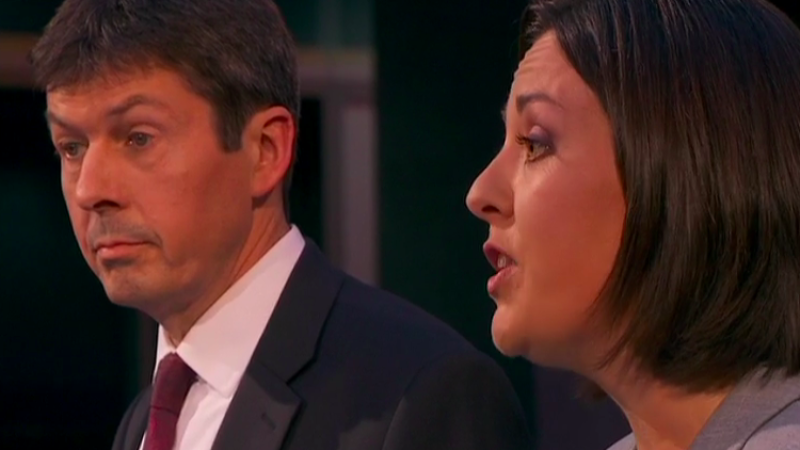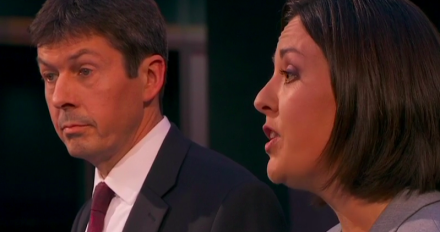

“Take a fresh look.” That’s what Kezia Dugdale tells me will be the slogan of this weekend’s Scottish Labour conference.
You don’t have to spend long in Scotland to see why. Pub conversations about politics seem to quickly become grim assessments of Labour’s fortunes; “hated” and “doomed” among the more printable conclusions.
Unsurprisingly, Dugdale, who was elected Scottish Labour leader in August with a majority that would make even Jeremy Corbyn’s eyes water, has big plans for the party. But before we get on to solutions, what I want to hear from her is an explanation of why we did so badly. We lost 40 seats in Scotland. ‘Reduced to a rump’ would be exaggerating our good fortune. What happened?
The perception of being a “Westminster branch office”, the withering departing barb of former leader Johann Lamont, hurt Scottish Labour badly. “There is no doubt that the people of Scotland, the electorate in Scotland, believed that the Scottish Labour Party was run by Westminster”, Dugdale says. Much of it is a direct result of the independence referendum, where age-old political truths became irrevocably muddled.
“What happened to us in May links back to what happened in September. People were angry at us for being seen to work beside the Tories. They looked at our manifesto and saw 150 great policies but no clear purpose in terms of what we stood for.”
Rhetorically, the SNP appeared to outflank Labour to the left. In the leaders’ debates, Nicola Sturgeon made the same anti-austerity arguments much more effectively than Natalie Bennett or Leanne Wood. Dugdale is quick to cut down where this argument is going. “There are just as many pro-austerity people supporting the SNP as there are anti-austerity”, she says, citing post-election research.
Rather than the glimpses of Sturgeon’s lefty posturing we see, people know what they are voting for: Dugdale says she “wouldn’t presume people in Scotland think the SNP are left wing”. This suggests that a shift to left won’t necessarily help Labour.
“It wasn’t where we sat on the political spectrum that caused this problem. It wasn’t a question of whether you were left or right, but a question of whether you were Yes or No. When 45% of the country vote yes and that coalesces into a vote for one political party, it is very difficult to beat that party.”
That’s why her first big move as leader is not about policy, but party reform. It is about changing the way Scottish Labour runs, to make it clear to voters who it run by and who it is run for. What’s the vision that she has?
“A more autonomous Scottish Labour Party, a party that has powers over selections, over CLP managements, so never again can we have another Falkirk, where the Scottish Labour leader was a bystander to events. Where we have our own policy-making process, across a whole range of different areas. Where we will co-operate over issues of staffing and finance, so very much still part of the UK-wide Labour Party and the labour movement, but with the ability to set out our own course.
“The reason this matters is that the electorate in Scotland sent a very loud and clear message; they thought Scottish Labour was run by Westminster, and they want to vote for parties that represent the Scottish interests.”
On this, she is backed by both Jeremy Corbyn and Tom Watson – Corbyn even signed a joint statement earlier this week backing the reforms. The next steps in the process are for the UK Labour NEC and the Scottish Executive Committee (SEC) to, essentially, bash out the details of what this greater autonomy will look like. The plans, which will necessitate changes to the Labour Party’s rulebook, will then be put to a vote at conference in Liverpool next year.
I note that policy is one of the areas she wants more autonomy in. Does that mean the Scottish and UK party could have different policy positions?
“It’s across all policy areas. It’s the ability to be able to set out our own direction. For example, welfare reform. You could have a situation where what the Scottish Labour says about welfare reform is different from the UK party. In part because we’ve got new powers coming, and new powers on the way, but in part because we’ve got to set out a particular path in line with Scottish interests.”
That’s sounds like it might get complicated. “There’s no doubt it will pose a lot of questions for the UK party and there has to be a process to handle that.” It is now up to the SEC and NEC to work together to figure out details “like what might happen when we have different positions on policy”.
However, it is not as unusual as it sounds, Dugdale contests, and there are many templates across Europe for political parties with federal structures. Ultimately, that is what she wants to see, but she is adamant that this plan is not the route to a fully independent Scottish Labour: “No, it stops that.”
She hopes this will kickstart the conversation about reforming Labour’s structures across the UK, and lead to radical new plans on devolution. On Monday she told a meeting of the Parliamentary Labour Party that what she presents “is a huge opportunity to for the rest of the UK party to make sure it’s fit for the future.” She is hesitant to prescribe the same solution for Labour in England (“that’s not for me to say”), but shows some scepticism of the the idea of an English Labour.
“That’s for England to have that debate, to work out from the work that Jon Cruddas is doing, the work emerging from Labour Together, what best suits the needs of English communities. I don’t know if you’d even refer to it as the English Labour Party, because I don’t think there’s one size fits all for England. How could there be in a country of 45 million people?”
She is clear, though, that the party needs to get a grip.
“My concern is that if the rest of the UK just accepts the status quo, if it fails to reform and innovate, in line with how our politics works in the future, it may end up like Scotland further down the road.”
This weekend’s conference in Perth will see “some pretty serious policy meat on the bones”, yet success is not yet around the corner. What, I ask, does a good result for Scottish Labour in next May’s Holyrood elections look like?
Having worked with Jim Murphy for so long, she has picked up a few football analogies.
“What does success look like? Being clapped off the pitch at the end of the season.”



More from LabourList
Humza Yousaf woes deepen as Labour files no-confidence vote in government
‘History and poll leads suggest Labour can be bolder, even if it costs some votes’
Labour warned ‘ethical foreign policy’ inevitably sparks charge of ‘hypocrisy’